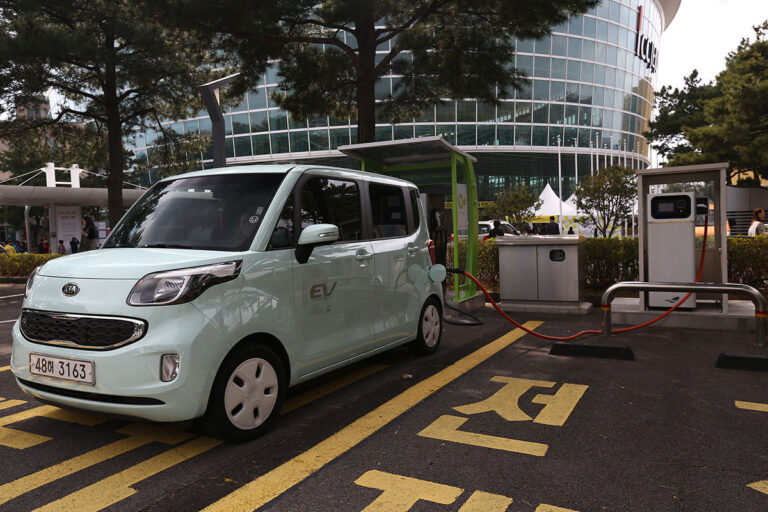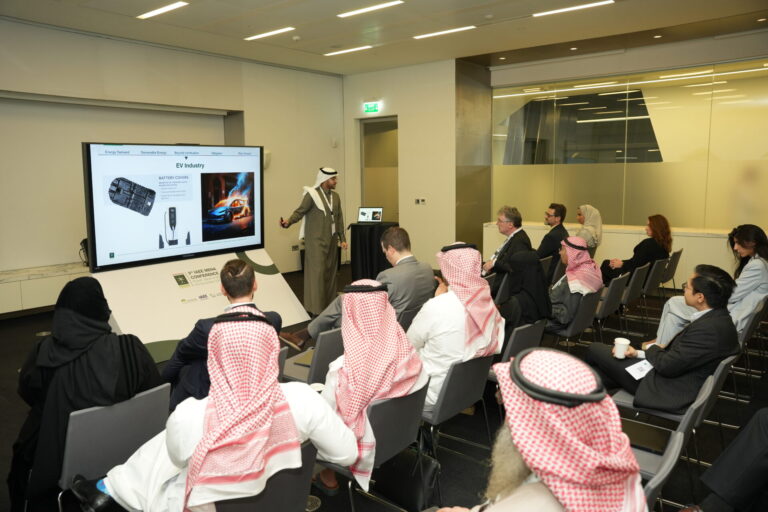The goal of achieving net-zero emissions across the globe requires a radical rethink of national economies. The key strategy in this transition is to create a circular carbon economy (CCE) that minimizes carbon dioxide and other greenhouse gas emissions, through sustainable energy systems that take advantage of all available technologies.
However, the path to a CCE varies across nations, depending on their national circumstances, and finance and other resource availability. A team of climate policy and economics experts at KAPSARC have developed a detailed assessment tool called the CCE Index, which analyzes national and international datasets to assess countries’ readiness for this transition.
In their most recent study, index authors Mari Luomi and Fatih Yilmaz joined forces with regional energy expert David Wogan to apply the CCE Index to a group of six Southeast Asian countries. Their analysis highlights several success stories and challenges in this region, identifying priority areas for future policies and investment.
Closing the carbon cycle
“The concept of CCE emerged in academic literature and climate policy discussions in the late 2010s,” says Luomi. “In 2016, architect and academic William McDonough argued that carbon per se is not the problem, but rather the emissions that are released into the atmosphere. He coined the four Rs of the CCE–reduce, recycle, reuse and remove–through which the threats related to carbon embedded in fuels and nature to the climate could be mitigated or solved.”
The CCE concept became a major theme in energy discussions during the Saudi presidency of the G20 in 2020 and is now endorsed by several leading countries.
“Our interest was spiked by how the CCE provided Saudi Arabia with a way to be part of the net-zero discussion,” says Luomi. “The concept speaks to many of the country’s needs and priorities, including taking a technology-neutral approach to climate change mitigation and focusing on a technology mix that suits the needs of each country.”
Over the past few years, Luomi and co-workers have applied their CCE Index not just to Saudi Arabia and the Middle East but to most of the world’s largest economies. Recently, they turned their attention to Southeast Asia, a region characterized by rapidly developing economies whose future energy transitions will be important on a global level. The researchers focus went to six major economies, Indonesia, Malaysia, the Philippines, Singapore, Thailand, and Vietnam.
While they share many similarities, each country has unique economic structures, resources and policies. The CCE Index provides the opportunity to analyze these differences and help countries learn lessons from each other about how best to deploy future investments and technologies.
“The country scores from our Circular Carbon Economy (CCE) Index provide a multidimensional overview of the current state of net-zero transitions worldwide.”
Mari Luomi
Highlighting Southeast Asia’s unique energy landscape, Wogan notes that some countries, like Indonesia, are net energy exporters, due to their abundant fossil fuel resources. However, others like Malaysia and the Philippines are experiencing a growing dependence on energy imports.
“They are trying to navigate the challenge of balancing growing energy demands—fuelled by population growth and industrial expansion — with their sustainability and decarbonization ambitions. The lessons from these countries could be transferable to other middle-income countries and serve as a roadmap for low-income countries as they chart a path for the future,” he says.
Implementing the index
The CCE Index assesses countries’ progress towards CCE based on two key aspects. The first, the CCE Performance sub-index, benchmarks countries’ current engagement in eight primary climate change mitigation approaches, namely energy efficiency, renewable and nuclear energy, fuel switching, electrification, natural sinks, clean hydrogen and carbon capture technologies.
The second sub-index, CCE Enablers, assesses how well a country is placed to make progress towards net-zero emissions in the future. It is calculated based on scores for 30 indicators, across themes including policies and regulations, technology, innovation, finance and resilience.
“The total CCE Index score is the equally weighted average of the performance and enablers scores,” says Luomi. “As a whole, the country scores provide a multidimensional overview of the current state of net-zero transitions worldwide. Initially, we started off with the largest economies because they represent the largest shares of global emissions, but we have been expanding. The 2023 edition included 64 countries and about 90% of global greenhouse gas emissions, while the 2024 edition covered 125 countries and 96% of emissions.”
Such a complex assessment tool requires huge amounts of data on the industry, technologies, finance and politics in each country. Luomi, Yilmaz and the team working on the index gathered data from several reputable sources, including official statistics from the United Nations and peer-reviewed indicators developed at universities, corporations, and consultancies.
“We engage in regular discussions with a large number of our data providers to discuss quality and other technical and methodological considerations,” Luomi says. “For each annual edition of the index, we review each of the indicators to see if improved datasets have become available, and when we see issues in data, we inform the data providers.”

Comparing Southeast Asian countries
Singapore emerged as the top performer among the six Southeast Asian countries, according to the CCE Index. It has the highest income, a strong service-based economy and well-established policies on energy efficiency and sustainability.
“Singapore’s physical characteristics, especially its small geographic footprint and location at the intersection of trade routes, likely also play important roles,” says Wogan.
A more unexpected result was Vietnam’s performance. Over the last two decades Vietnam has implemented policies to expand access to energy, especially electricity, and encourage industrial activities. Vietnam also leads in CCE investments, despite the low penetration of international sustainable finance.
A way forward
Based on the assessment, the team recommends several key policies for achieving CCE in Southeast Asia. One priority is to move to using electricity in as many sectors as possible, to reduce consumption of carbon-intensive fuels. Electrifying transport in particular would greatly increase energy efficiency, with the added benefit of improving urban air quality.
“Some countries in SEA have expanded their use of renewable energy such as solar, wind and geothermal, through policy frameworks [For example, the Philippines] and investment [such as Vietnam],” says Wogan. “It is important to share the best practice and challenges, to help other countries exploit their renewable energy potential and maintain reliable electricity services.”
Newer technologies like clean hydrogen and carbon capture will also play important roles. “Countries like Indonesia, Malaysia, and Vietnam already have plans to become regional hubs for hydrogen and captured CO2,” says Wogan.
Ensuring continued commitment
A smooth energy transition requires not only technology, but also the necessary infrastructure, regulatory frameworks and above all, money, to foster and embed the new solutions. The KAPSARC team suggests that countries must have clear long-term emissions reduction targets, as well as plans for attracting investment and building international knowledge-transfer links to help develop their local expertise.
“An adaptable policy framework will allow policies to change as new information emerges, global markets evolve, and new technologies become available,” explains Wogan. “These countries should explore financing mechanisms, such as green bonds, blended finance, and international climate finance, to mobilize the necessary capital for their net-zero ambitions. Singapore is a natural player to facilitate financing in the region.”
The team recently launched the 2024 edition of their CCE Index, comprising 125 countries, in two events at the UN Climate Change Conference in Baku, Azerbaijan “We are proud to have reached this level of coverage, because it allows us to speak authoritatively of the global pursuit of net-zero emissions and related trends,” says Luomi.
Reference
Wogan, D.; Luomi, M.; & Yilmaz, F. Southeast Asia and the Circular Carbon Economy: A Rapidly Developing Region. KAPSARC (September 2024) DOI: 10.30573/KS–2024-DP35 Article




